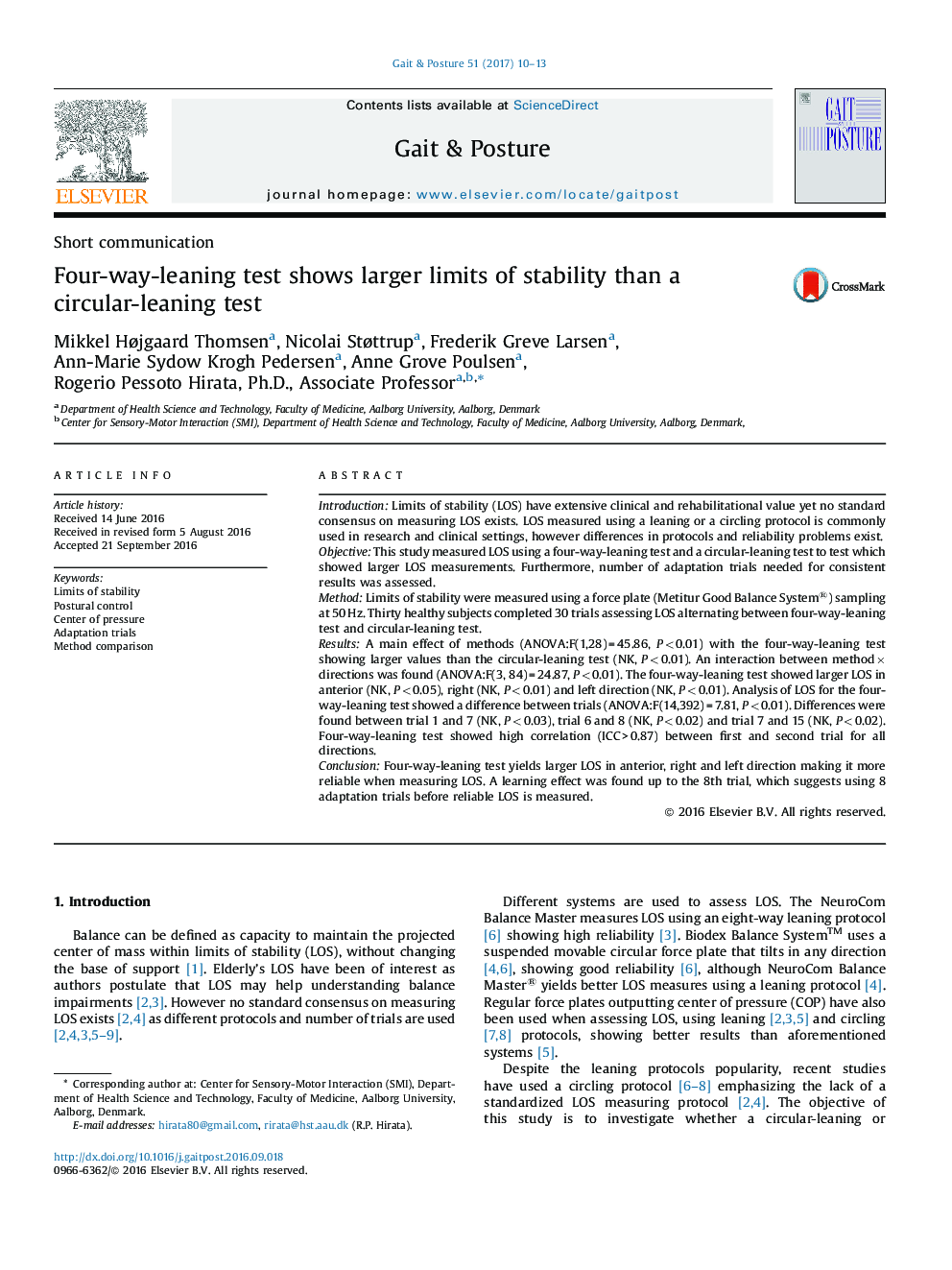| کد مقاله | کد نشریه | سال انتشار | مقاله انگلیسی | نسخه تمام متن |
|---|---|---|---|---|
| 4055513 | 1603844 | 2017 | 4 صفحه PDF | دانلود رایگان |
• Four-way-leaning test yielded larger limits of stability displacement.
• A learning effect was found during first eight trials of the four-way-leaning test.
• COP displacement differences yields better measures of reliability than ICC.
IntroductionLimits of stability (LOS) have extensive clinical and rehabilitational value yet no standard consensus on measuring LOS exists. LOS measured using a leaning or a circling protocol is commonly used in research and clinical settings, however differences in protocols and reliability problems exist.ObjectiveThis study measured LOS using a four-way-leaning test and a circular-leaning test to test which showed larger LOS measurements. Furthermore, number of adaptation trials needed for consistent results was assessed.MethodLimits of stability were measured using a force plate (Metitur Good Balance System®) sampling at 50 Hz. Thirty healthy subjects completed 30 trials assessing LOS alternating between four-way-leaning test and circular-leaning test.ResultsA main effect of methods (ANOVA:F(1,28) = 45.86, P < 0.01) with the four-way-leaning test showing larger values than the circular-leaning test (NK, P < 0.01). An interaction between method × directions was found (ANOVA:F(3, 84) = 24.87, P < 0.01). The four-way-leaning test showed larger LOS in anterior (NK, P < 0.05), right (NK, P < 0.01) and left direction (NK, P < 0.01). Analysis of LOS for the four-way-leaning test showed a difference between trials (ANOVA:F(14,392) = 7.81, P < 0.01). Differences were found between trial 1 and 7 (NK, P < 0.03), trial 6 and 8 (NK, P < 0.02) and trial 7 and 15 (NK, P < 0.02). Four-way-leaning test showed high correlation (ICC > 0.87) between first and second trial for all directions.ConclusionFour-way-leaning test yields larger LOS in anterior, right and left direction making it more reliable when measuring LOS. A learning effect was found up to the 8th trial, which suggests using 8 adaptation trials before reliable LOS is measured.
Journal: Gait & Posture - Volume 51, January 2017, Pages 10–13
